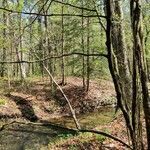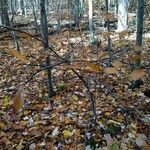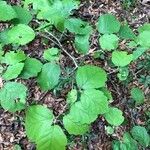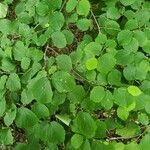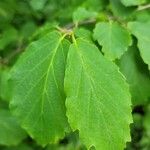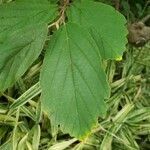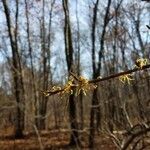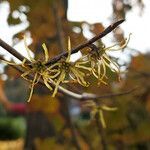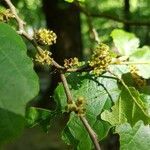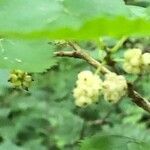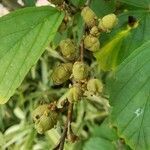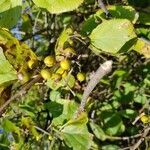Shrubs or small trees , to 6(-10.6) m, suckering, forming dense clumps, not aromatic and resinous. Leaves not persistent in winter; petioles 6-15(-20) mm. Leaf blade broad-elliptic to nearly rounded or obovate, 3.7-16.7 × 2.5-13 cm, base strongly oblique and rounded, sometimes somewhat cuneate and weakly oblique, apex acute to short-acuminate or broadly rounded; surfaces abaxially pale green, not glaucous. Flowers appearing in autumn, faintly fragrant; calyx adaxially yellow-green to yellow; petals pale to deep yellow, rarely reddish, 10-20 mm; staminodes conspicuously dilated. Capsules 10-14 mm. Seeds 5-9 mm. 2 n = 24.
Shrub to 5 m; lvs broadly obovate or obovate-oblong, 5–15 cm, with several or many rounded teeth, inequilateral at the broadly rounded or subcordate base, often stellate beneath; pet spreading, 1.5–2 cm, yellow or seldom reddish; sep dull yellowish-brown within; fr ovoid or thickly ellipsoid, 1–1.5 cm, the hypanthium often bearing the persistent sep; 2n=24. Moist woods; Que. and N.S. to n. Mich. and Minn., s. to Fla. and Tex. Oct., Nov., the fr ripe a year later.
